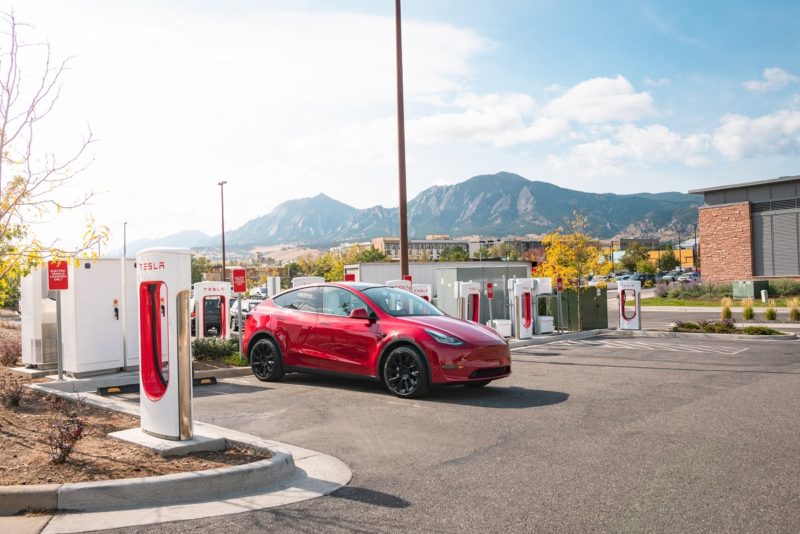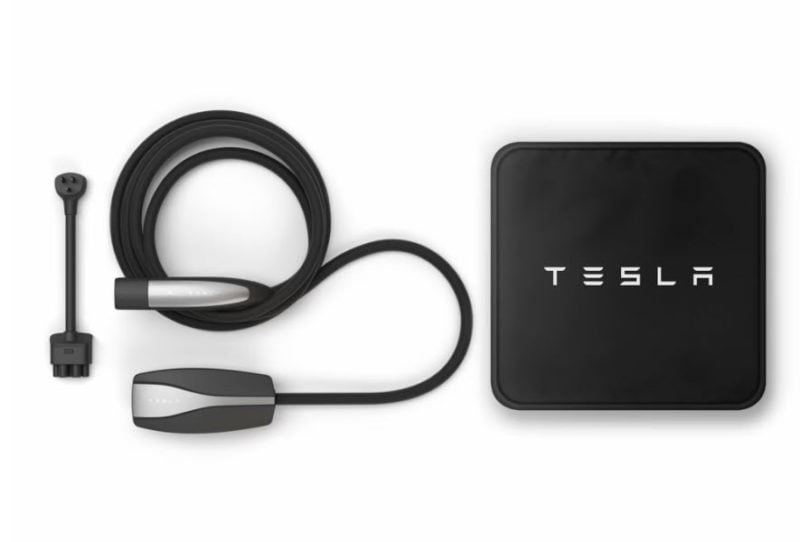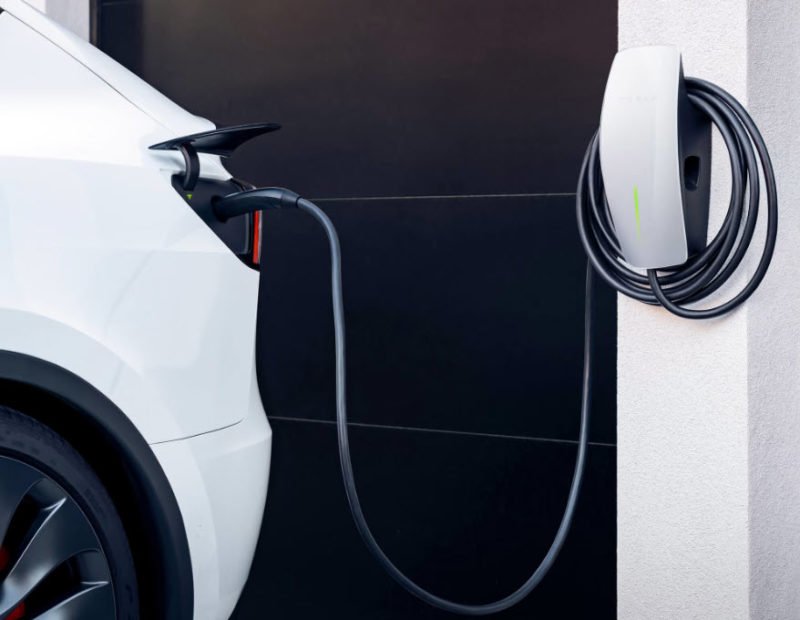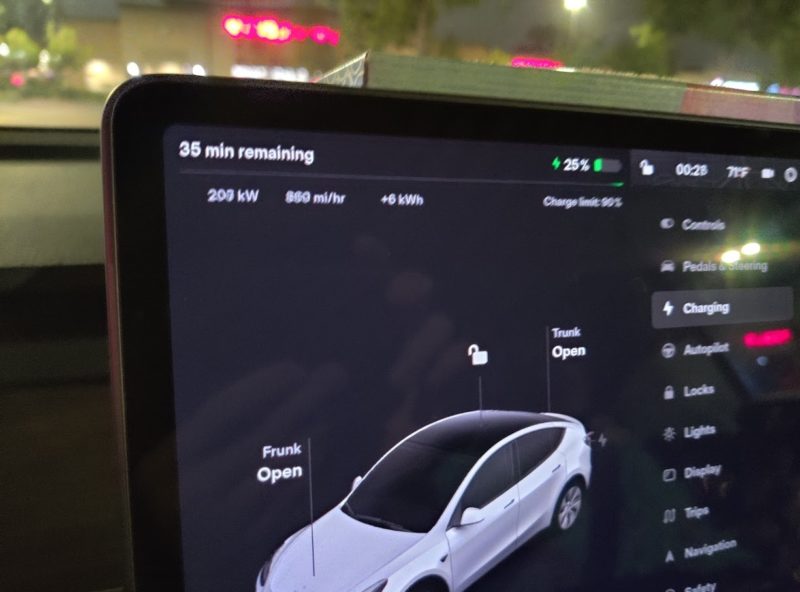
As someone we recently purchased a Tesla Model Y, one of the questions I had going into my purchase was simply how long does it take to charge a Tesla Model Y. Like many future Tesla owners, I had plenty of questions going in on how I was going to charge my Tesla once I took delivery. There’s quite a bit of complexity in the EV charging space and now that I’ve spent the better part of a few months figuring out how to charge my Tesla and long it takes to charge, this article serves to share my findings and hopefully will be helpful for future Tesla owners.
EV Charger Levels
Before we get into how long it would take to charge a Tesla, we first need to talk about EV charger levels. Generally speaking, there are three EV charger levels: Level 1, Level 2, and Level 3. Within these levels, there is a difference in charging speed as well but generally speaking think of Level 1 charging as slow charging, Level 2 charging as medium speed charging, and Level 3 being fast charging.
| Charger Level | Connector | Voltage | Amperage | Charging Speed (Kilowatts) |
| 1 | Tesla, J1772 | 110 – 120 | 8-20 | 0.8 – 2.4 |
| 2 | Tesla, J1772 | 208 – 240 | 12 – 80 | 2.4 – 19.2 |
| 3 (DCFC) | Tesla, CCS, CHAdeMO | 208 – 800 | 100+ | 50-350 |
As you can see above, not only will the EV Charger Level drastically change how long it takes to charge the Tesla, but the battery size inside the various Tesla vehicles will also affect how long it takes to charge the vehicle. Therefore, in this article, we’ll focus on an average charging speed using the most common methods to charge Tesla vehicles to estimate charging time.
Level 1 Charger
The Level 1 charger is the most basic charger and is typically a mobile charger with a NEMA 5-15 adapter. For most Tesla vehicles, this is likely going to be the Tesla Mobile Connector as it’s the charger that comes with the vehicle (purchased separately for vehicles purchased after May 2022).

The Tesla Mobile Connector is capable of charging most Tesla vehicles at around 3-4 miles per hour (1.8kW or 2.4kW) depending on the outlet’s maximum breaker capacity (15 amp or 20 amp) that it’s plugged into. For most homes, this is typically a 15 amp breaker, so it will charge at a rate of about 1.8kW (3 miles per hour). For a Tesla Model Y with an 82 kWh battery, this translates to an approx 45.5 hour charge time if the battery were to be fully depleted.
| Vehicle | Battery Size | Avg Charging Speed (Level 1) | Estimated Time to Full Charge |
| Tesla Model S / X | 100 kWh | 1.8 kWh | 55.5 hours |
| Tesla Model 3 | 80 kWh (Long Range) | 1.8 kWh | 44.4 hours |
| Tesla Model Y | 82 kWh (Long Range) | 1.8 kWh | 45.5 hours |
*For the purposes of this chart, battery size is the total battery size, not the usable battery size.
Level 2 Charger
The Level 2 charger is the typical charger you’d think of when thinking of EV chargers. These are the most common chargers out there and typically what you’d find in many homes, apartment buildings, hotels, and EV charging stations. The key difference that sets these chargers apart from Level 1 chargers is that these operate on 240V AC which effectively doubles the wattage (since watts = voltage * amperage) compared to a Level 1 charger. It also typically has a much higher amperage as well (32A vs 15A), so charging speed is significantly increased and charging time is significantly reduced.
For most new Tesla owners, something you may not know is that the Tesla Mobile Connector is not only capable of Level 1 charger, but is also capable of Level 2 charging if you utilize one of the following adapters: NEMA 6-50 adapter, NEMA 14-50 adapter, NEMA 14-30 adapter, NEMA 10-30 adapter, NEMA 6-20 adapter, or NEMA 6-15 adapter. By using one of these adapters, the Tesla Mobile Connector is capable of charging at up to 32 amps at 240V, which translates to roughly 7.7 kWh. Tesla sells an entire adapter bundle if you’re interested in purchasing it however, most new installations in homes for EV charging use the NEMA 14-50 adapter, so you’ll be able to get away with just purchasing that adapter when charging at home.
For a more permanent installation (although the Tesla Mobile Connector can technically be installed permanently) and faster charging speed if the electrical infrastructure supports it, you can also go with the Tesla Wall Connector which is what you’d typically think of with a Tesla Level 2 charger. This charger has a maximum output of 48 amps (11.5 kWh) whereas the Tesla Mobile Connector maxes out at 32 amps. These chargers are also similar to the Tesla Destination Chargers that you’d typically find at hotels and restaurants.

| Vehicle | Battery Size | Avg Charging Speed (Level 2) | Estimated Time to Full Charge |
| Tesla Model S / X | 100 kWh | 7.7 kWh | 12.9 hours |
| Tesla Model 3 | 80 kWh (Long Range) | 7.7 kWh | 10.4 hours |
| Tesla Model Y | 82 kWh (Long Range) | 7.7 kWh | 10.6 hours |
*For the purposes of this chart, battery size is the total battery size, not the usable battery size.
Level 3 Charger
The Level 3 charger which is also known as DC Fast Charging is what you’ll typically find at Tesla Superchargers or other CCS / CHAdeMO connector chargers at dedicated charging stations. These are currently the fastest charging stations out there with the Tesla Supercharger being most likely the charger you’ll want to use for a Tesla.
The Tesla V3 Supercharger is Tesla’s Level 3 Charger and is capable of charging at up to 250 kWh (480v 3-phase, ~300 amps).
| Vehicle | Battery Size* | Avg Charging Speed (Level 2) | Estimated Time to Full Charge** |
| Tesla Model S / X | 100 kWh | 250 kWh | 33.3 minutes |
| Tesla Model 3 | 80 kWh (Long Range) | 250 kWh | 32 minutes |
| Tesla Model Y | 82 kWh (Long Range) | 250 kWh | 33 minutes |
*For the purposes of this chart, battery size is the total battery size, not the usable battery size.
**Keep in mind the above is an estimated time to full charge. With DC Fast Charging, there are quite a few additional factors to consider such as ambient temperature, vehicle temperature, battery conditioning, etc. Typically, charging also will slow down as the battery reaches maximum capacity, so actual time to full charge may vary slightly.

To illustrate the above, here is a real world example of a Tesla Model Y charging at a V3 Supercharger station. As you can see, despite the ability for a 250kW charger to charge at 250kW, at the time the vehicle was charging at 207-209 kW and had an estimated charging time of 35 minutes from 25% to 90%.
Final Thoughts
While looking at the Level 1 and Level 2 charger charging times may be scary when looking at it at face value, it doesn’t really paint the full picture of what owning a Tesla is like. The reason is that unlike driving an ICE (Internal Combustion Engine) vehicle, you never drive the vehicle all the way to empty and charge it up from 0% to 100%. With a Tesla, you’ll typically charge it up to 80%-90% everyday and your daily commute will only require maybe 20%-40% power. Once you get home, you’ll simply plug it into your charger and when you wake up the next day, it will be fully charged, ready to do a full 200-300 miles (depending on how full you want to charge the battery).
As a result, for most people, myself included, it simply does not matter how long it takes to charge the Tesla. The impact to my day is simply a few seconds to plug the charger into the vehicle when I get home and a few seconds to unplug the charger when I’m planning to leave. That’s it. Previously I had to visit a gas station, which was a detour out of my way and in many cases I had to wait in a line (Costco) that took far more time out of my day. On the few trips I take a year where I’d have to drive longer distances, I simply plan out a route that has Tesla V3 Superchargers, and while taking a break from driving to stretch the legs, eat, and use the restroom, the car charges and I’m on my way in no time.

0 Comments